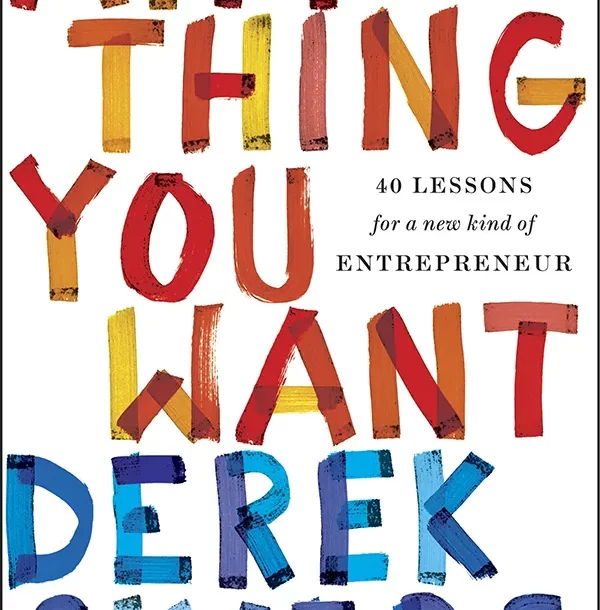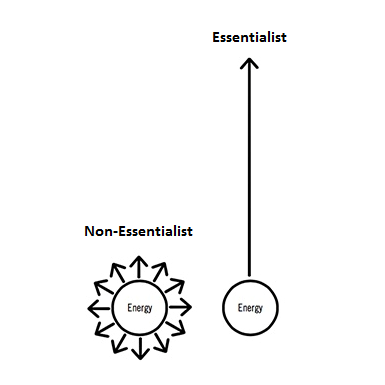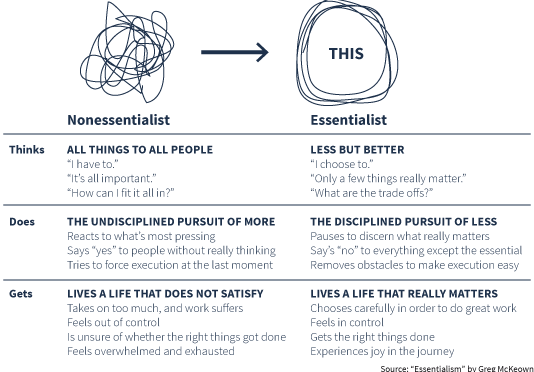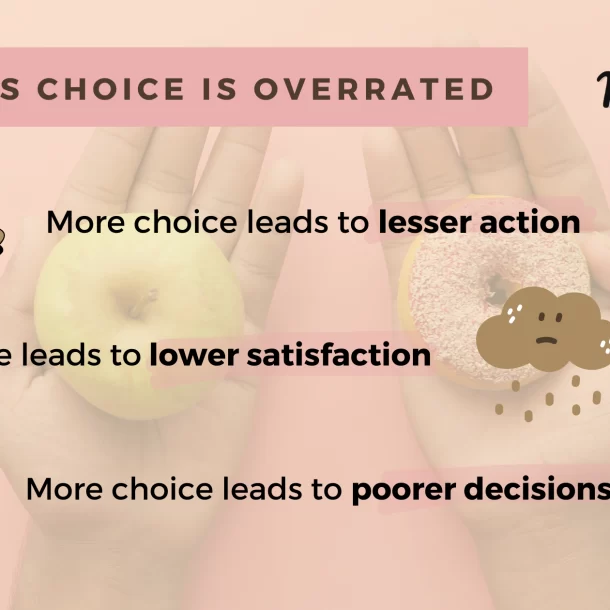
Essentialism: Book Summary
Essentialism is the ability to discern the vital few from the trivial many and the disciplined pursuit of less. The book approaches the essence of essentialism and lays out 3 ways – explore, eliminate, and execute to live the life of an essentialist.
Overall rating: 7/10
The premise of the book is simple – we have limited energy, time, and resources. We can spread ourselves thin and dissipate our life in many directions or focus all our energies towards one direction and accomplishing a lot more – as demonstrated in the diagram below.

Quick Takeaways
Essence: The core-mindset of essentialist is the power of individual choice, that everything is noise except a vital few, and that we cannot have it all.
Explore and Evaluate: Discerning the trival many from the vital few – “Will this activity make the highest contribution towards my goal?”
Eliminate: Cutting out the trivial many – “If you didn’t already have something, how much would you fight or how high a price would you pay for it?” If it’s not all of your life energies or priceless, it needs to be eliminated.
Execute: Removing obstacles and making execution of the vital few effortless “How can you live essentialism moment to moment to focus on the great things and achieve the highest possible return for your time?”

Book Notes
Mindset
Essence or the core mindset of an essentialist
Individual Choice – We can choose how to spend our energy and time.
The prevalance of noise – Almost everything is noise, and a very few things are exceptionally valuable. We must take time to discern noise from substance.
The reality of trade-offs – We can’t have it all or do it all. Instead of asking “How can I have it all?,” we need to ask ourselves, “which problem do I want?”
Why pursue less?
Less is not doing less, but doing better.
”More effort causes our progress to plateau and even stall. The idea of direct correlation between efforts and results is appealing.” But research shows that this is seldom true.
It’s not about what you do always. Sometimes what you don’t do is as important as what you do.
Explore
To discern the vital few from the trivial many you need to do the following:
1. Escape – Take time off to allow space for the mind to explore what truly matters.
2. Look – Find the essence in everything. Instead of getting lost in the noise, pay attention to what the signal is indicating. Clarify the question. Get out into the field. Keep a journal.
3. Play – Engage in play often to broaden your options for you to explore.
4. Sleep – Sleep is not a time waste, it is a driver for peak performance.
5. Select – Hell yes or a no! Have extreme criteria to select the vital few – 90 percent rule. Rate things on a scale of 1 to 100 and automatically reject all options at 90 percent or lower.
Eliminate
1. Clarify: Clarify your essential intent by making one clear decision to avoid 1000 confusions later
2. Say NO: Dare to say no firmly, resolutely, gracefully.
– Mindset to say no: Seperate the decision from the relationship. Focus on the trade-off. Think about what you’ll have to give up if you say yes. Saying no might make you unpopular, but you’ll still earn other’s respect for choosing what matters. A clear “no” is better than a vague non-committal “yes”
– How to say no? Pause, Say “No, but” No to what they asked, but yes to something you can offer,” “Let me check my calendar and get back to you.” “Yes, but what should I deprioritise?” “I can’t do it. But X might be interested”
3. Uncommit: Win by cutting your losses. Think, “what else could i do with this time or money if i pulled the plug now?” Ask, “If I weren’t already invested in this project, how much would I invest in it now?”
4. Edit: Think subtract, subtracting can make things better.
5. Limit: Set Boundaries to eliminate saying no. Setting limits help becoming limitless.
Execute
1. Buffer: Build a buffer for unexpected events, practice extreme and early preparation. Add 50% to your time estimate
2. Subtract: Be clear about the essential intent. Identify the slowest hiker (or the constraint or bottleneck in your way. Remove obstacles to do more. The example of constraints in The Goal by removing the bottleneck you do more.
3. Progress: Start small, get big results. Celebrate small acts of progress
4. Flow: Design a routine centering on what’s essential to make execution effortless.
5. Focus: Be present, ask yourself, “what’s important now?” and focus all your attention and energies on that.
– Multi-tasking v/s Multi-focus – You can multi-task but you cannot concentrate on two things at the same time.
6. BE: The essential life is to live a life that really matters without regret, with more clarity and joy.
Notes
Aim for consistency and repetition rather than novelty and inspiration.
Quotes
“The more we reach for the stars, the harder it is to get off the ground.”
“You cannot overestimate the unimportance of practically everything.” ~ John Maxwell
“To follow, without halt, one aim: there is the secret to success.” ~ Anna Pavlova
“The crime which bankrupts men and states is that of job-work – declining from your main design to serve a turn here or there.”~ Ralph Waldo Emerson

